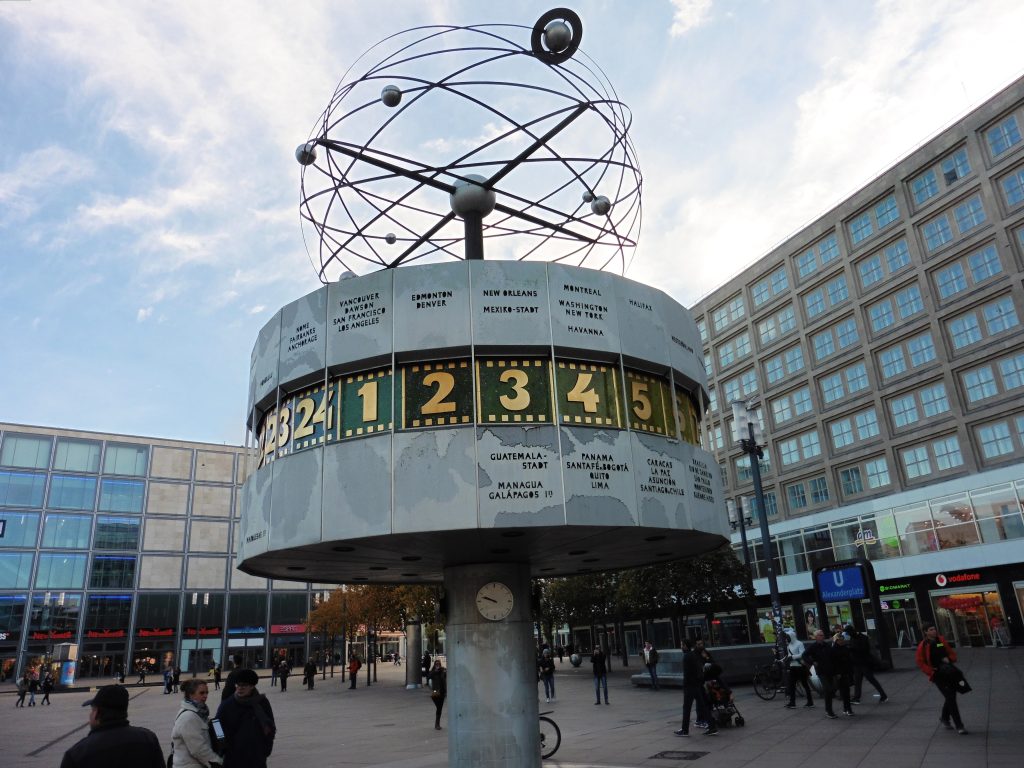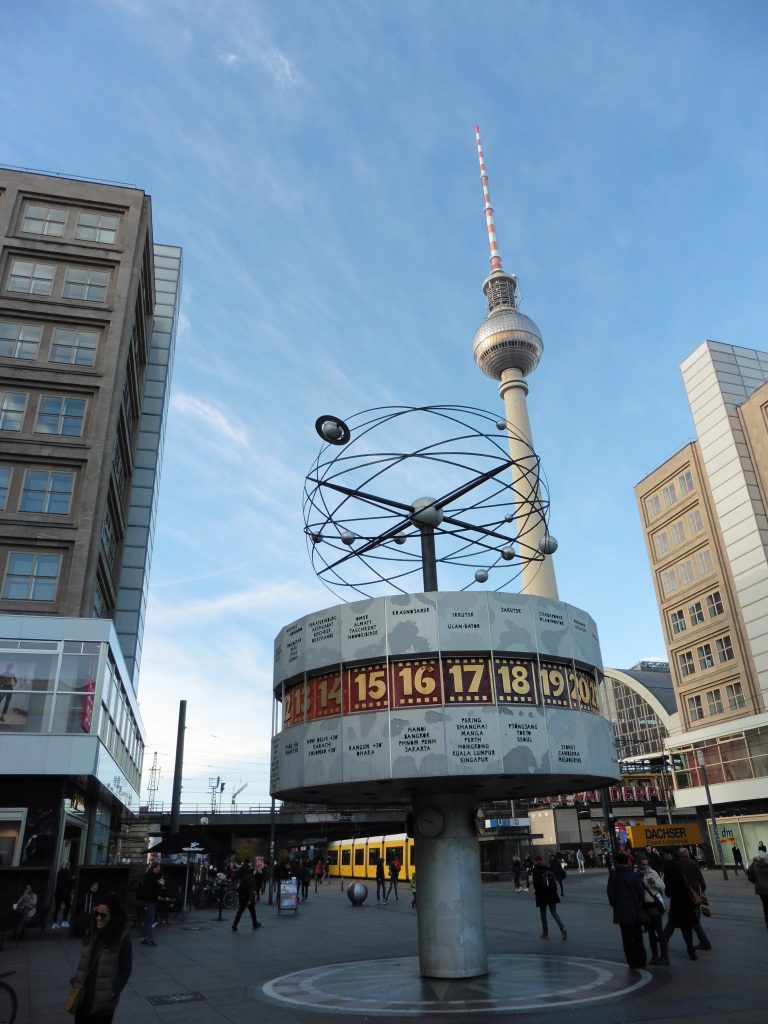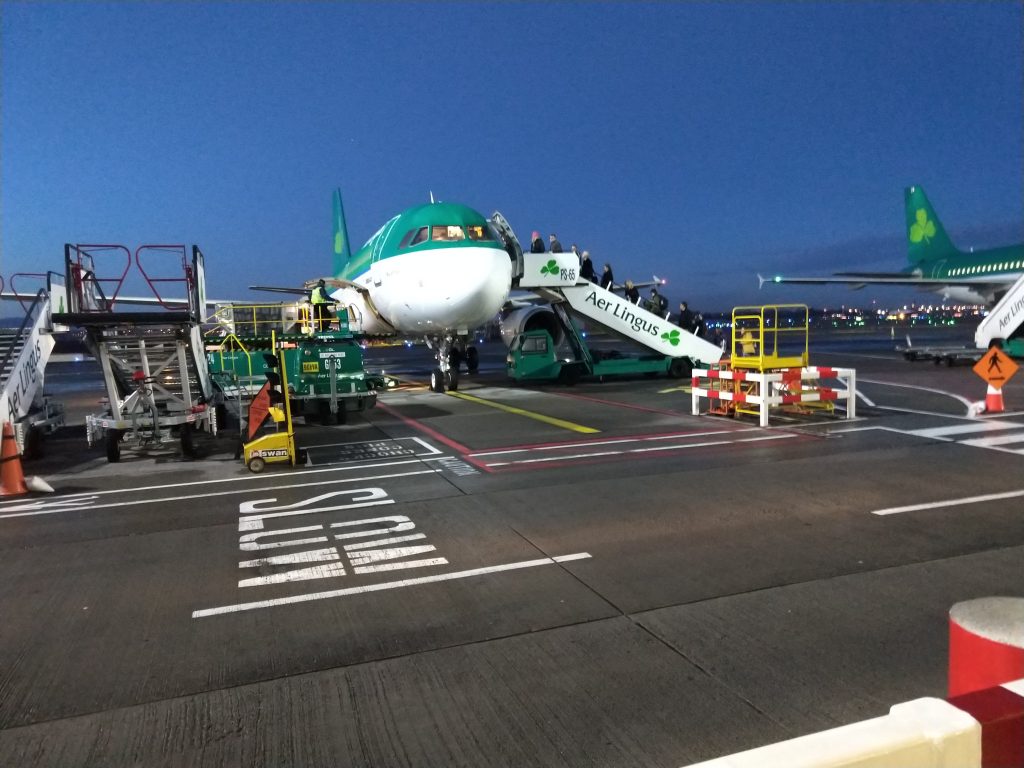First stop on my trip. Welcome to Dublin.
Year: 2018
MapJourney ends for today in Berlin.
Syndication Links 4.0.0 Released
Today, from my hotel room in Berlin, Germany, where I am preparing to attend Indiewebcamp Berlin, my first European Indiewebcamp, I released Syndication Links 4.0.0.
The major version number change is because in this version, Syndication Links takes on a new role. As promised previously, I’ve built new syndication code and added supported for Bridgy and Indienews, which both uses Webmentions to trigger a syndication action. This is disabled by default.
As my first live use outside of testing, I’m using the plugin to send this post to Indienews and Twitter(via Bridgy).
The new code adds the concept of a syndication provider, which, when registered, adds the provider as a syndication target for Micropub clients as well as adds it to the WordPress classic editor as a series of checkboxes, er postone for each service.
The Bridgy Publish plugin I announced deprecation on had additional options on a per post and a global level. While the global settings will be coming back in a future version, I likely will not bring back the per-post settings.
Instead, I’d like to add more intelligence behind these decisions, based on other properties of the post. A checkbox is all you should need. The same with auto-syndication. If you decide you want everything to go to Twitter or some site, it shouldn’t check the box…there shouldn’t be a box at all. It should just go, even if there are some more parameters to make that decision…type of post, etc.
So, you are either all in, or in on a per post basis.
I look forward to feedback. This is only the beginning. I hope to do what I did for displaying syndication links, and interface with existing plugins in addition to writing my own integrations.
The major version number change is because in this version, Syndication Links takes on a new role. As promised previously, I’ve built new syndication code and added supported for Bridgy and Indienews, which both uses Webmentions to trigger a syndication action. This is disabled by default.
As my first live use outside of testing, I’m using the plugin to send this post to Indienews and Twitter(via Bridgy).
The new code adds the concept of a syndication provider, which, when registered, adds the provider as a syndication target for Micropub clients as well as adds it to the WordPress classic editor as a series of checkboxes, er postone for each service.
The Bridgy Publish plugin I announced deprecation on had additional options on a per post and a global level. While the global settings will be coming back in a future version, I likely will not bring back the per-post settings.
Instead, I’d like to add more intelligence behind these decisions, based on other properties of the post. A checkbox is all you should need. The same with auto-syndication. If you decide you want everything to go to Twitter or some site, it shouldn’t check the box…there shouldn’t be a box at all. It should just go, even if there are some more parameters to make that decision…type of post, etc.
So, you are either all in, or in on a per post basis.
I look forward to feedback. This is only the beginning. I hope to do what I did for displaying syndication links, and interface with existing plugins in addition to writing my own integrations.

 The sixteen ton world clock was opened to the public in 1969, shortly before the twentieth anniversary of the German Democratic Republic, along with the Berlin TV Tower(seen in the background). The erection of the clock was part of a larger plan to expand and reorganize Alexanderplatz as a whole. At the end of the renovations, the public square was four times larger than it was at the end of the World War II.
The sixteen ton world clock was opened to the public in 1969, shortly before the twentieth anniversary of the German Democratic Republic, along with the Berlin TV Tower(seen in the background). The erection of the clock was part of a larger plan to expand and reorganize Alexanderplatz as a whole. At the end of the renovations, the public square was four times larger than it was at the end of the World War II.It was intended to be both a symbol of Communist power and of Berlin. It remains the latter today, as it is easily visible throughout the central and some suburban districts of Berlin. With its height of 368 metres (including antenna) it is the tallest structure in Germany, and the second-tallest structure in the European Union.
A surprisingly number of people are here for the Hebrew language tour. Wish my Hebrew was better.
The Bebelplatz is known as the site of one of the infamous Nazi book burning ceremonies held in the evening of 10 May 1933 in many German university cities. Today a memorial consisting of a glass plate set into the cobbles, giving a view of empty bookcases (large enough to hold the total of the 20,000 burnt books), commemorates the book burning. Furthermore, a line of Heinrich Heine from his play, Almansor (1821), is engraved on a plaque inset in the square: “Das war ein Vorspiel nur, dort wo man Bücher verbrennt, verbrennt man am Ende auch Menschen.” (in English: “That was only a prelude; where they burn books, they will in the end also burn people”).
Gendarmenmarkt is a square in Berlin and the site of an architectural ensemble including the Konzerthaus (concert hall) and the French and German Churches. During World War II, most of the buildings were badly damaged or destroyed. Today all of them have been restored. The German Church was completely destroyed by fire in 1945, during World War II. After German reunification it was rebuilt, finished in 1993 and re-opened in 1996 as a museum of German history. The Konzerthaus Berlin is the most recent building on the Gendarmenmarkt. It was built by Karl Friedrich Schinkel in 1821 as the Schauspielhaus. Like the other buildings on the square, it was also badly damaged during World War II. The reconstruction, finished in 1984, turned the theatre into a concert hall. Today, it is the home of the Konzerthausorchester Berlin.

